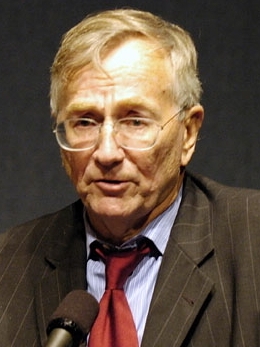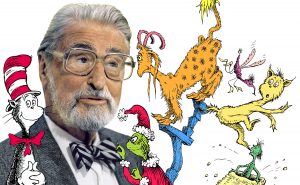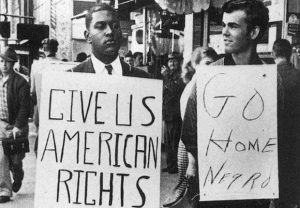What was originally described to the American people as a major victory during the Vietnam War only turned out to be one of the most heinous war crimes in the history of the United States. On the morning of March 16, 1968, between 347 and 504 Vietnamese civilians were raped, tortured, and murdered by U.S. soldiers of Charlie Company, 23rd Infantry (Americal) Division. My Lai was a cluster of hamlets of Son My village, nicknamed “Pinkville” by the division’s soldiers because of the concentration of Communist sympathizers and Viet Cong (VC) activity in the area.1 The murder that day of unarmed civilians went on for hours as members of the Task Force Barker burned every hamlet in sight. The numbers of civilians killed would’ve been a higher number if it weren’t for helicopter pilot Hugh Thompson Jr.2 The truths about what happened at My Lai were kept secret by the military, and would have remained secret, were it not for the freelance reporter Seymour Hersh, who exposed the horrible truths of what occurred on that day of the massacre, as well as the equally infamous cover-up.

Task Force Barker was a battalion-sized strike force in the 11th Infantry Brigade that stormed the region of My Lai performing their search-and-destroy operation, and later labeled the outcome as just another statistical victory for the military. Nearly four months after the atrocity of My Lai, stories and accounts were being leaked out.3 Different accounts of what took place during the hours of the My Lai Massacre show that groups of civilians were being lined up and mowed down by machine guns led by Lieutenant William Calley Jr. Children were used as target practice, according to an account from an ex-GI that stated “a tiny infant, barely of crawling age became the object of a marksmanship contest.”4 At the same time, women were raped and older men were grouped up around ditches to be murdered. Lieutenant Hugh Thompson Jr. was the pilot of the Hiller OH-23 Raven helicopter in Task Force Barker providing a sweep of the area until realizing that what was taking place below him wasn’t a war but a massacre. Hugh Thompson landed his helicopter between a group of soldiers and civilians and told his gunmen that if another soldier killed anyone else, his men were to fire on those soldiers. Toward the end of the massacre, at 3:55 p.m., Task Force Barker’s log of kills was reported to be all Viet Cong soldiers, but in reality they had been My Lai village’s women, young children, and older men.5
The American people had been told that My Lai was a victory for the American Military, but what was being told was only covering up the atrocity that had taken place. As news started to leak out about a possible cover-up, Lieutenant William R. Peers was chosen to secretly gather information on what had happened at My Lai by General William Westmoreland, Commanding Officer in Vietnam. On November 24, 1968, Peers was chosen to head all military investigations leading into My Lai by the Pentagon after letters from Ronald Ridenhour, a discharged Vietnam veteran, had surfaced.6 Ronald Ridenhour wrote in these letters wanting “a widespread and public investigation on this matter,” with Ridenhour receiving information on what had happened in My Lai from Charlie Company members who partook in the killings and who failed to report anything to their military superiors. These stories then became public and accusations were brought up against the officers and enlisted men of the units involved in the killings and the cover-up.7

The real truths of My Lai were uncovered with the many testimonies of the soldiers of the platoon and its military officers. The American people wanted more answers as to what had happened in My Lai, which led Seymour Hersh to investigate beyond what was already buzzing. Hersh was tipped off to the My Lai story by an antiwar activist who happened to be an attorney familiar with one of the soldiers in Charlie Company. Hersh said that he approached an aide to the army chief of staff about the story, and was given Lieutenant William Calley Jr.’s name. Hersh was granted access by the Army to visit with Lieutenant Calley, who was being held in prison for the accusations of murdering civilians in My Lai. During these visits, Hersh discussed the killing of innocent Vietnamese civilians from details given from Calley, who ultimately led the massacre by murdering hundreds of civilians.8 U.S. Army Lieutenant Colonel Frank Barker Jr. was the commanding officer of Task Force Barker. He ordered Captain Ernest Medina to pass the word on to Calley to fire on the hamlets of My Lai. As the story grew against Calley, the Pentagon knew this criticism against the military must be put to an end, as this was an obvious case of a cover-up.9 The investigation on Charlie Company GIs weren’t being done by the inspector general anymore, but rather by a newly organized office of the Criminal Investigation Division.

An infamous picture was released by U.S. Army photographer, Ronald Haeberle, showing many dead women and children lying on the side of a dirt road murdered. Haeberle was the photographer who accompanied the men of Charlie Company that day. There were many piles of bodies like the ones depicted in the photo that soldiers had tried to cover with straw. These photos were the real truths of what happened in My Lai that these soldiers failed to report to higher ranking officials. A military source had told Hersh, “nobody could believe that senior officers could know about it and not say anything, the early emphasis was on Calley and Medina.”10 These stories created a world-wide outcry and the Army knew they needed to create a panel to investigate deeper. Seymour Hersh had all the information he needed to break the story of My Lai wide open to the American public. Many news agencies refused to run Hersh’s original reporting, except for Dispatch News Service, who first aired the story on November 12, 1969. The story was aired on television, and the next morning it was printed in dozens of newspapers across the country. The story revealed that U.S. Army soldiers had brutally murdered more than five-hundred civilians.11
More than three years after the My Lai Massacre, Hersh was provided with thirty volumes of testimony, documents, and other materials from the Peers Panel, evidence that all pointed back to Lieutenant William Calley Jr. and Captain Ernest Medina, along with their superiors, Colonel Oran K. Henderson and Major General Samuel Koster. Lieutenant William Calley Jr. was the only one not acquitted of his charges. In a trial after the testimony’s of the different battalion soldiers, Calley was found guilty of premeditated murder of 109 civilians by a military jury and sentenced to life in prison. Captain Ernest Medina was acquitted of his charges after denying giving the orders to Calley. Colonol Henderson and Major General Koster’s charges were also acquitted.12 Lieutenant William Calley Jr. spent a day in prison and was released by President Nixon to be put under house arrest while Calley’s case was being appealed. Calley had his sentence reduced and only served three and a half years on house arrest.

After the story broke over the My Lai Massacre cover-up, the antiwar movement gained new momentum. Antiwar protests mushroomed all throughout the country, predominantly on college campuses. While tensions on college campuses were high, demonstrations at one of them, Kent State in Ohio, led to the killing of four college students, shot by the Ohio national guard. Hersh’s editor at the New York Times during the 1970s has said that Hersh “exposed some of the most despicable behavior on the part of public officials” and “made Americans aware when our leaders don’t measure up to the values expressed in all the songs we sing and pledges we make.” Hersh later went on to win the Pulitzer Prize for his investigating and writing to uncover what happened in My Lai.13 Americans were shocked that their military committed such a crime that was covered-up only to be exposed a year later. Many Americans who had once supported the war began to lessen their support, and were often critical of the military. The pullout of American troops and the ending of U.S. involvement in the war came in 1973.14
- Encyclopedia of the Vietnam War: A Political, Social, and Military History, 2011, s.v, “My Lai Massacre.” ↵
- Encyclopedia of the Vietnam War: A Political, Social, and Military History, 2011, s.v, ” Thompson, Hugh Jr.” ↵
- Encyclopedia of the Vietnam War: A Political, Social, and Military History, 2011, s.v, “Barker, Frank Akeley Jr.” ↵
- Seymour Hersh, Cover-Up: the Army’s secret investigation of the massacre at My Lai 4 (New York: Random House, 1972), 15. ↵
- Seymour Hersh, Cover-Up: the Army’s secret investigation of the massacre at My Lai 4 (New York: Random House, 1972), 19. ↵
- Seymour Hersh, Cover-Up: the Army’s secret investigation of the massacre at My Lai 4 (New York: Random House, 1972), 231. ↵
- Seymour Hersh, Cover-Up: the Army’s secret investigation of the massacre at My Lai 4 (New York: Random House, 1972), 5. ↵
- The Literature of Propaganda, 2013, s,v. “My Lai: 4 A Report on the Massacre and Its Aftermath.” ↵
- Seymour Hersh, Cover-Up: the Army’s secret investigation of the massacre at My Lai 4 (New York: Random House, 1972), 229. ↵
- Seymour Hersh, Cover-Up: the Army’s secret investigation of the massacre at My Lai 4 (New York: Random House, 1972), 228. ↵
- Milestone Events Throughout History, 2014, s,v. “Seymour Hersh Breaks the Story of the My Lai Massacre”, 386-388. ↵
- Seymour Hersh, Cover-Up: the Army’s secret investigation of the massacre at My Lai 4 (New York: Random House, 1972), 7. ↵
- Seymour Hersh, My Lai 4: a report on the massacre and its aftermath (New York: Random House, 1970). ↵
- Milestone Events Throughout History, 2014, s,v. “Seymour Hersh Breaks the Story of the My Lai Massacre”, 386-388. ↵



50 comments
Jocelyn Moreno
I’ve never heard of the My Lai Massacre. It hurts my heart to hear what happened, I can’t believe that they tried to hide this from the public. I’m glad they were exposed by the freelance reporter and Hugh Thomas Jr. The picture helped me see all the horrors and terrible acts this caused and the longlasting outcome it had left.
Sofia Resendiz
Before reading this article I was not aware of the My Lai Massacre. Among all of the massacres I have heard of this is not one of them but maybe due to the fact that the government might not want to make it a well know one. It is sad to know that our military was responsible for committing a massacre. It is so unfair to know that the ones responsible received little to no punishment. Instead of Calley receiving life in prison he merely served three years in house arrest.
Matthew Wyatt
The My Lai Massacre is a dark and tragic stain on American history. Reading about all the horrible, inhumane actions committed by American service members, it’s easy to understand why we are not universally beloved throughout the world. This article could benefit from some editing, specifically focussing on run-on sentences. Also, the last sentence is not very strong and doesn’t provide a satisfying conclusion.
Irene Astran
The thought of men, women, and children being objectified in such a way that they were used for target practice for troops leave me sick. It leaves me uneasy that this is the reality during war time. So many innocent people get caught in the crossfire. I praise those that led these troops to be put on trial for what they had done.
Rebecca Campos
The tragedies that occurred at My Lai were absolutely horrific. The author chose a very difficult topic to write but definitely did so and with the respect that the victims deserved. It’s an incredible thing that the someone like Seymour Hersh was willing to uncover the hard truth. The victims definitely did not deserve this and whether there was war occurring or not, the actions taken were unnecessary and too far.
Engelbert Madrid
I’ve learned about the My Lai Massacre that happened in Vietnam War in one of my history classes in high school, which remains to be significant historical event in the Cold War. After the American press released the heinous images of innocent Vietnamese people that were killed by American soldiers, Americans realized that even their own country was becoming the enemy in the Vietnam War.
Jose Sanchez
The My Lai massacre is a very unfortunate and dark part of American history. While our military has often conducted itself with discipline and honor, we must recognize instances such as these and work to prevent them. We must hold our military to a standard and accountable. It is disgraceful to see no one was truly held liable for their actions.
Megan Copeland
I think what Hugh Thomas Jr. and Seymour Hersh did was very brave and noble. It was definitely the right thing to do. I think the My Lai Massacre was such a horrible thing that the United States did. I am so glad that those two men decided to speak up and put a stop to the heinous acts. I do not understand how people could torture and murder innocent civilians in cold blood. I also think it is awful that they tried to cover it up as well.
Pamela Callahan
Lieutenant Hugh Thompson Jr. was very brave to land his plane in the way that he did to protect those people. It is hard to think that people are even capable of so atrociously and heartlessly killing so many innocent people. The picture above really helped me to see the horrors that were occurring, and while it makes me sad, I think it is good to have images like this one to let people see what is going on in the world.
Mariah Garcia
I have heard of the My Lai Massacre, but I didn’t know in great detail what had occurred. But, after reading this article I am aware of the horrendous crimes that the US military is capable of. However, what is immoral about this horrible incident is that the US wanted to keep this a secret. Those men, women, and children didn’t deserve it. This was an emotional and eye opening article that kept my attention with the important facts that were written within the article.